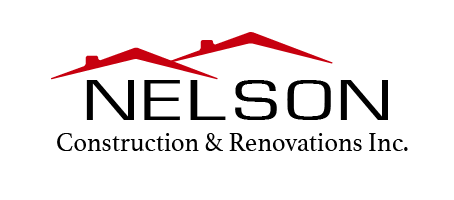 Generally defined as a small bathroom (4 by 5 feet on average) with a sink and a toilet, a powder room is sometimes called a guest bathroom or half bath. Having one on the main floor makes sense for your guests’ convenient, and allows them to use the facilities without having access to the homeowner’s private living space. And let’s face it: when you’re busy in the kitchen and nature calls, do you really want to have to run up a flight of stairs?
Generally defined as a small bathroom (4 by 5 feet on average) with a sink and a toilet, a powder room is sometimes called a guest bathroom or half bath. Having one on the main floor makes sense for your guests’ convenient, and allows them to use the facilities without having access to the homeowner’s private living space. And let’s face it: when you’re busy in the kitchen and nature calls, do you really want to have to run up a flight of stairs?
What’s Home Improvement Got to Do with Powder?
The term “powder room” has been around since the early 18th century, when it actually referred to a very small room where people went to have their wigs repowdered. It was still used in Victorian times, when referring to personal bodily functions was considered indelicate, especially among women. Ladies of the time would excuse themselves from mixed company to “powder their noses,” and many even today many women still use the phrase. Besides, calling a space without bathing facilities a “bathroom” doesn’t make sense!
When Home Improvement Space is of the Essence
Powder rooms are typically quite small and windowless, and might even be tucked underneath a stairway, to really maximize for overall space.
As there is no tub or shower, the primary feature is the vanity. Depending on space, however, even though a vanity or other cabinet surrounding the sink is handy for storage of extra hand towels, toilet tissue and soap, realistically there just may not be enough space available to accommodate one. A small freestanding unit or wall shelving may do the trick instead.
Your best option is usually the stand-alone pedestal sink, which is extremely popular in powder rooms with good reason. Aside from the obvious space-saving advantage, there are endless excellent styles and materials to choose from, with sleek, high-end faucets.
Though small, powder rooms invite some lighthearted latitude from a design perspective when choosing colors and textures for walls, flooring and more. The variety of fabulous and funky wall mirrors and sconces is astounding, along with endless options for creative lighting, such as retro chandeliers. Don’t forget the dimmer!
Whether your style is formal or fun, here are some more tips to note when powder room planning:
 Counters – Choose bright or reflective materials such as granite or quartz. For a greener but still durable alternative, consider a concrete countertop, which can be color-customized.
Counters – Choose bright or reflective materials such as granite or quartz. For a greener but still durable alternative, consider a concrete countertop, which can be color-customized. - Don’t scrimp on flooring – Stone or tile may be more resilient to stains than wood. Here’s your chance to indulge in something fancier and a bit more expensive, as a way to try out a particular kind of flooring you’re considering for another area of the house.
- Faucet finish – Make sure it blends with the overall design. If you choose a premium finish, such as brushed nickel, for example, it will be harder to successfully tie in fixtures, towel racks and other metal accents. High quality chrome is probably your best bet.
- Paper or paint? – Here’s where personal preference really comes into play. Wallpaper isn’t practical in a bathroom, where steam from tubs and showers is the norm. But a powder room gives you the chance to experiment with interesting designs and textures. If still concerned about wear and tear on the paper, your builder can always create a chair rail so the lower portion of the wall can be repainted. Remember that earth tones and light-colored natural materials can help make a space feel open, while a more intense wall or ceiling color makes a dramatic impact.
Whether your house is period-style or contemporary, the powder room design should blend harmoniously with the overall esthetic. Also consider displaying an interesting piece of art, letting people enjoy and appreciate its details from close range. Overall, however, keep the powder room clutter-free and simple; don’t over decorate.
Great Home Improvement Can Come in Small Packages
If you’d love to do some tweaking to make your living space more practical, and have long wanted the convenience of a powder room on the main floor, there’s no time like the present for some simple home improvement. Adding this one small room scores plenty of points when it comes to your home’s resale value, too.
Greg Nelson
 Greg Nelson is the owner of Nelson Construction & Renovations Inc. He is a Florida State Certified Building Contractor, creating artistry in all areas of design and construction projects. He is a musician, and artist. A husband and father, Greg appreciates all the wonderful elements of family life.
Greg Nelson is the owner of Nelson Construction & Renovations Inc. He is a Florida State Certified Building Contractor, creating artistry in all areas of design and construction projects. He is a musician, and artist. A husband and father, Greg appreciates all the wonderful elements of family life.
Creative Commons Attribution: Permission is granted to repost this article in its entirety with credit to Nelson Construction and a clickable link back to this page.
